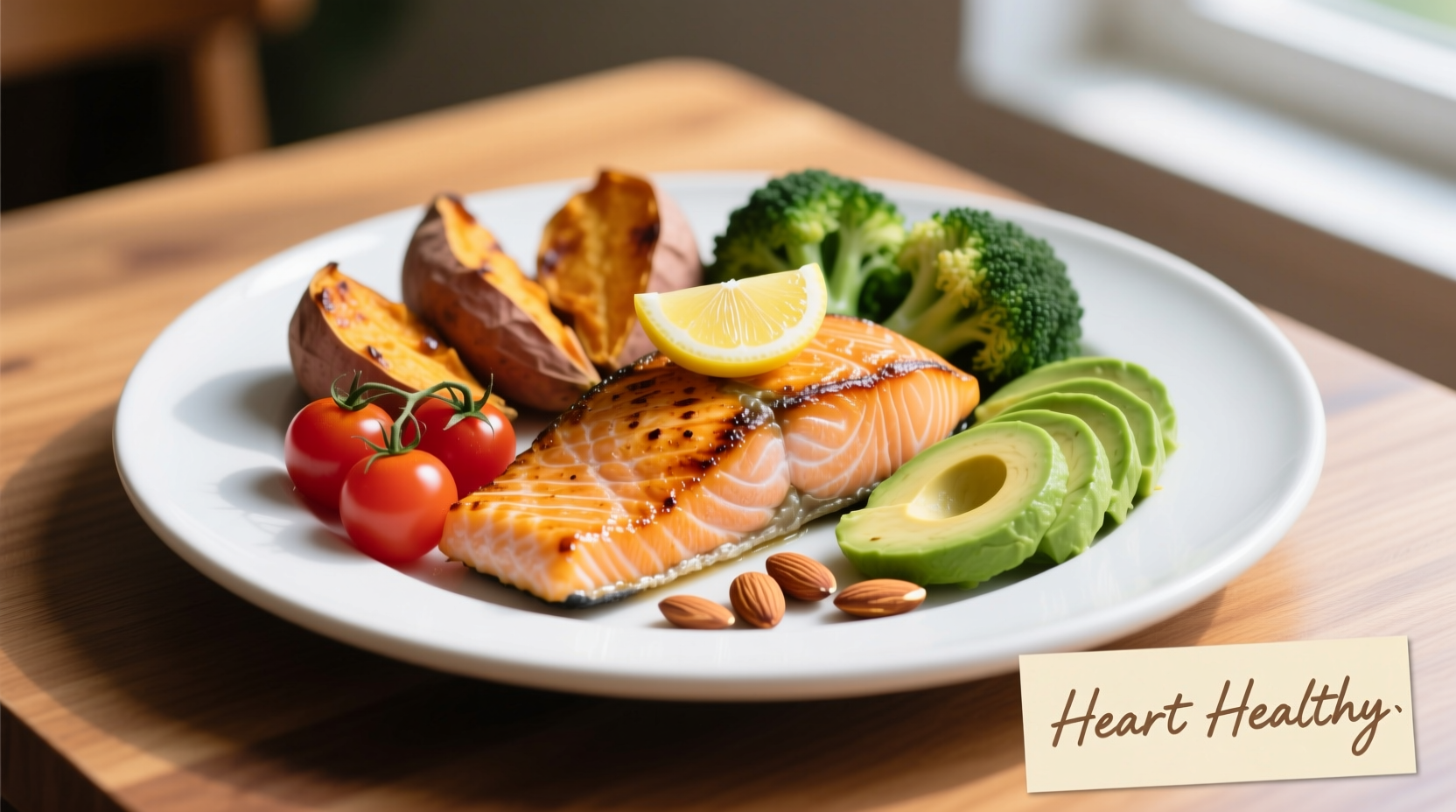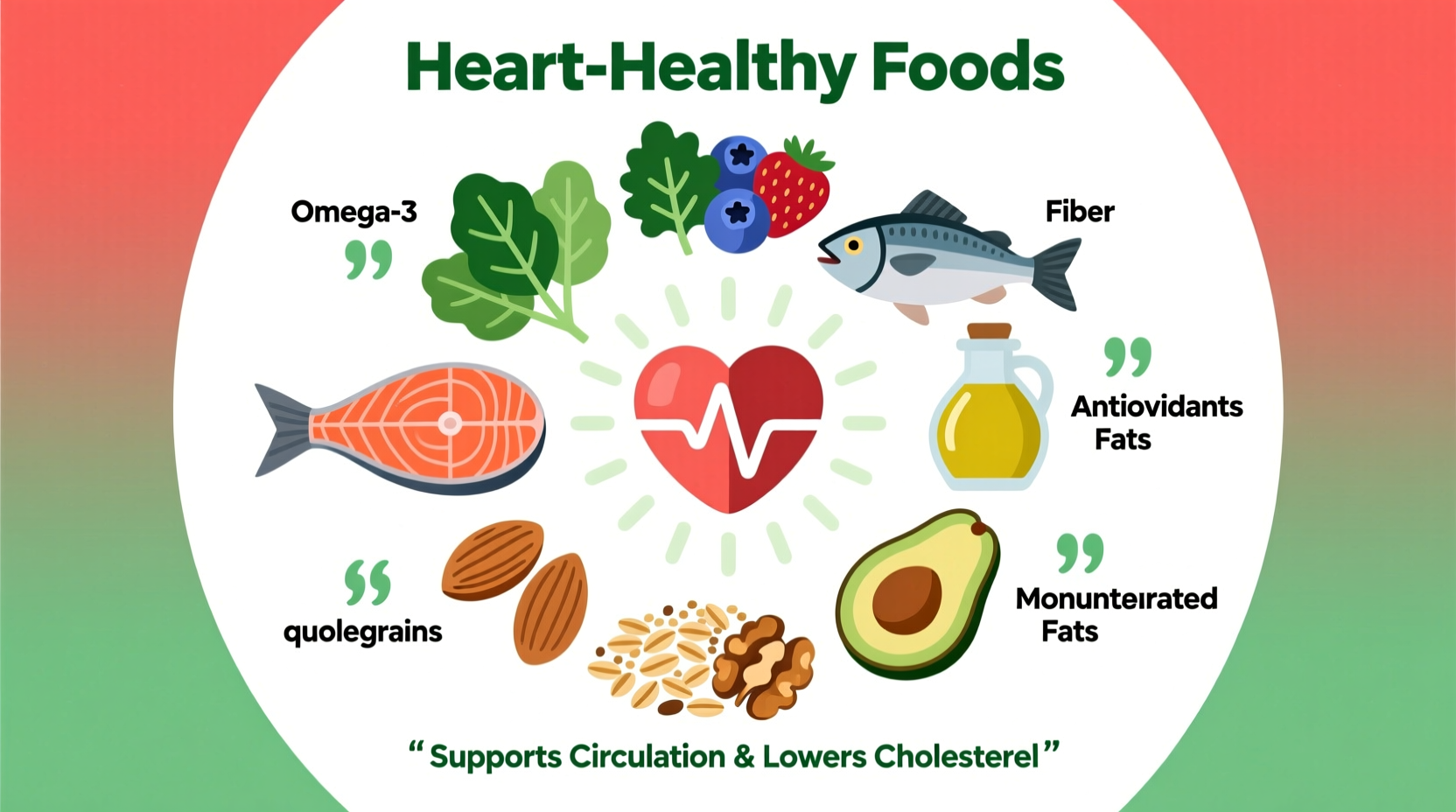Discover exactly which foods deliver the most powerful heart-protective benefits and how to incorporate them into your daily routine. This guide cuts through conflicting nutrition advice with science-backed recommendations you can trust and implement immediately.
The Science Behind Heart-Healthy Eating
Understanding why certain foods benefit your cardiovascular system helps you make informed choices beyond just following a list. Your heart thrives on specific nutrients that work synergistically to maintain optimal function.
Research from the American Heart Association shows that dietary patterns emphasizing whole, unprocessed foods can reduce heart disease risk by up to 30%. The magic happens through three primary mechanisms:
- Reducing inflammation - Chronic inflammation damages blood vessels
- Improving cholesterol profiles - Lowering LDL while raising HDL
- Regulating blood pressure - Through potassium, magnesium, and nitric oxide production
| Nutrient | Heart Benefit | Top Food Sources |
|---|---|---|
| Omega-3 Fatty Acids | Reduces triglycerides, prevents arrhythmias | Fatty fish, walnuts, flaxseeds, chia seeds |
| Soluble Fiber | Lowers LDL cholesterol by binding bile acids | Oats, beans, lentils, apples, psyllium husk |
| Polyphenols | Antioxidant effects, improves endothelial function | Berries, dark chocolate, green tea, red wine (moderate) |
| Monounsaturated Fats | Improves cholesterol profile, reduces inflammation | Olive oil, avocados, almonds, macadamia nuts |
Top Heart-Healthy Food Categories You Should Eat Daily
Fatty Fish and Omega-3 Powerhouses
Salmon, mackerel, herring, and sardines deliver the most potent form of omega-3s (EPA and DHA). The Centers for Disease Control and Prevention recommends at least two 3.5-ounce servings of fatty fish weekly. These reduce heart attack risk by 36% according to a Journal of the American College of Cardiology meta-analysis of 19 studies.

Whole Grains That Lower Cholesterol
Oats, barley, quinoa, and brown rice contain beta-glucan, a soluble fiber that binds cholesterol in your digestive tract. Harvard researchers found that each 10-gram daily increase in whole grain consumption reduces heart disease risk by 27%. Start your day with steel-cut oats topped with berries for maximum benefit.
Nuts and Seeds for Heart Protection
Walnuts, almonds, chia seeds, and flaxseeds provide plant-based omega-3s (ALA), magnesium, and fiber. A landmark study published in Circulation followed 210,000 health professionals for 32 years and discovered that eating a handful of nuts five times weekly reduced cardiovascular disease risk by 14%.
Practical Implementation Guide
Simple Swaps for Heart Health
You don't need a complete diet overhaul to improve your heart health. Implement these practical substitutions that make a measurable difference:
- Replace butter with extra virgin olive oil for cooking and dressings
- Choose whole fruit instead of fruit juice to get fiber benefits
- Swap red meat for fatty fish or legumes two to three times weekly
- Use avocado instead of mayonnaise in sandwiches and salads
- Snack on a small handful of nuts rather than processed crackers
Sample Heart-Healthy Meal Plan
Here's how to structure your day using heart-protective foods:
- Breakfast: Oatmeal with walnuts, chia seeds, and blueberries
- Lunch: Spinach salad with grilled salmon, avocado, olive oil dressing, and chickpeas
- Snack: Apple slices with almond butter
- Dinner: Quinoa bowl with black beans, roasted vegetables, and a sprinkle of flaxseed
Common Misconceptions About Heart-Healthy Eating
Despite widespread information about heart-healthy foods, several persistent myths cause confusion:
- Egg yolks are dangerous: Recent research shows moderate egg consumption (up to one daily) doesn't increase heart disease risk for most people
- All fats are bad: Healthy fats from avocados, nuts, and olive oil actually improve cholesterol profiles
- Heart-healthy means tasteless: Flavorful herbs, spices, and healthy cooking techniques create delicious meals
The National Heart, Lung, and Blood Institute emphasizes that dietary patterns matter more than individual "superfoods." Consistency with heart-healthy choices delivers the greatest protection.
Who Should Consult a Professional Before Making Changes
While heart-healthy eating benefits nearly everyone, certain individuals should consult healthcare providers before making significant dietary changes:
- People taking blood thinners (like warfarin) who consume vitamin K-rich foods
- Those with kidney disease monitoring potassium intake
- Individuals with food allergies or specific dietary restrictions
- People managing multiple medications that may interact with certain foods
Your physician or a registered dietitian can help personalize these recommendations based on your health status and goals.
Making Heart-Healthy Eating Sustainable
The most effective heart-healthy diet is one you can maintain long-term. Focus on gradual changes rather than perfection:
- Start with one weekly meatless meal featuring legumes
- Gradually increase vegetable portions at each meal
- Experiment with different herbs and spices to replace salt
- Involve family members in meal planning for better adherence
- Track your progress with a food journal to notice positive changes
Remember that small, consistent improvements compound over time. Research shows that even modest dietary changes can reduce cardiovascular events by 20-30% when maintained consistently.











 浙公网安备
33010002000092号
浙公网安备
33010002000092号 浙B2-20120091-4
浙B2-20120091-4